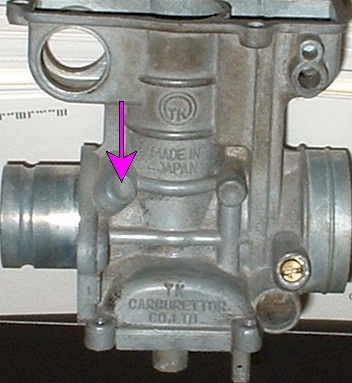First is the fuel rail. Each carb will have a fuel rail port on each side. Depending on the location of the carb there will be one drilled port to feed the fuel valve, and the #2 and #3 carb will have a second port to allow fuel to flow to the other carbs in the rack.
Here is one fuel rail port with no drilling. A is a port to the fuel valve, but is not drilled. B is the port to connect to another carb but is not drilled.

Here is a fuel rail with the port to the fuel valve drilled: C
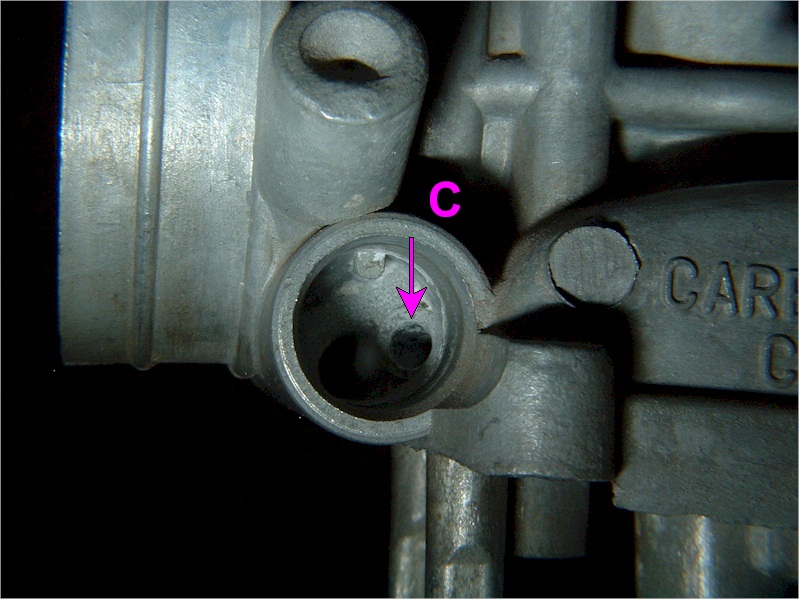
The port starting at C goes to the fuel valve and exits at D.

There are two bowl vents in the body, but only one of them is drilled and can breathe. The other is a dead end. The one that breathes is on the opposite side from the actual vent outlet. The vent port goes through the body casting just behind the choke plate. Here are the bowl vent ports. The one on the left is drilled. The one on the right is a dead end.
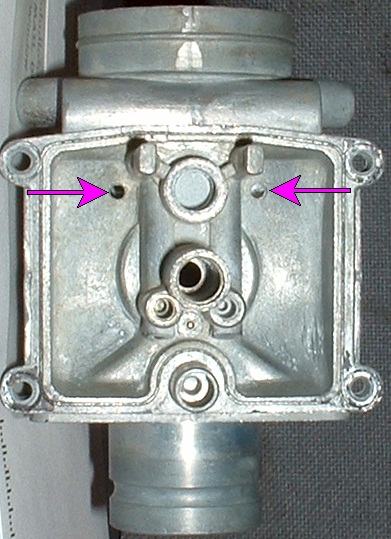
Here is the vent outlet. There will be a hose here connected to the next carb with a T fitting to the vent hose. The vent hose will just go upward toward the airbox and be left open to the air.
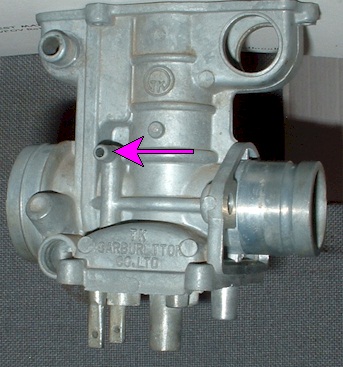
E is the air intake for the main-jet/needle-jet gallery. It goes straight into the gallery and feeds air to the main circuit's emulsifier tube.

F is the main-jet/needle-jet gallery. This is where the main-circuit components reside. The tip of the arrow shows where the air comes in from E .

G is the air intake for the pilot circuit. It feeds air to the airscrew.

The airscrew, in the USA, is capped from the factory to prevent tampering. There is about an 1/8" of clearance beneath the cap to the air screw. A very, very sharp awl can be tapped into the cap, then the cap can be pried off very easily. Care must be taken to not damage the airscrew. The air screw threads are a standard M4 x 0.7 thread.
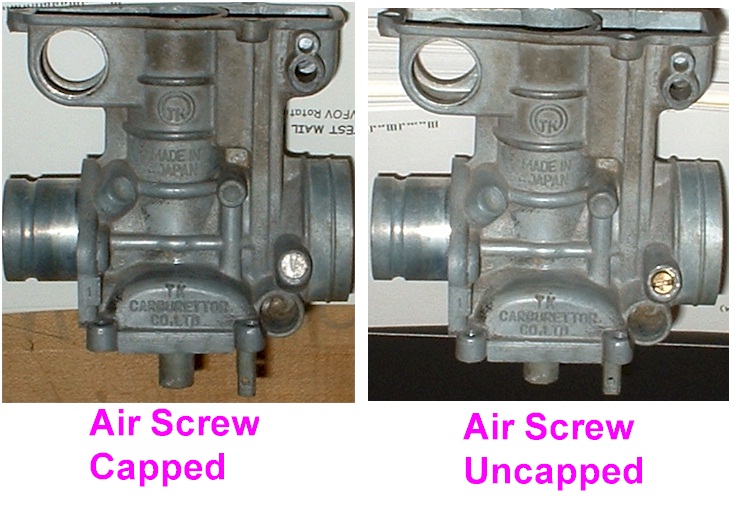
Here is the port for the air screw. There is one on each side of the body, but only one will be drilled and tapped. The airscrew port takes air from intake G , which, in this photo, will be from the right. Then the airscrew regulates the air. The air exits at the tip of the screw and goes to the left in this particular carb, in this photo.
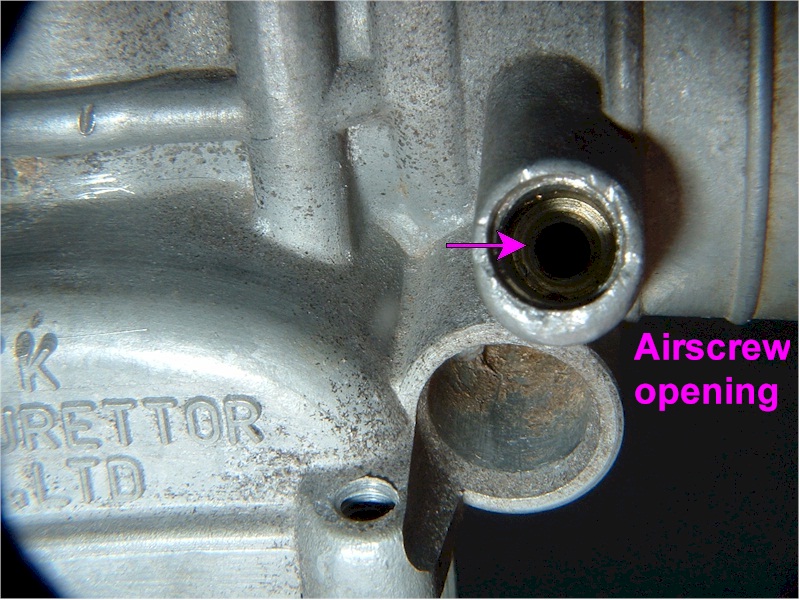
Air from the airscrew comes toward the pilot jet through the port identified by the plug labeled H . The pilot jet screws into the pilot gallery at I . The air surrounds the pilot jet inside of the pilot gallery I . Note that there is another mirror image port on the other side of the float bowl. This carb won't use that port, but on another carb, that may be the pilot gallery, and will contain the pilot jet.
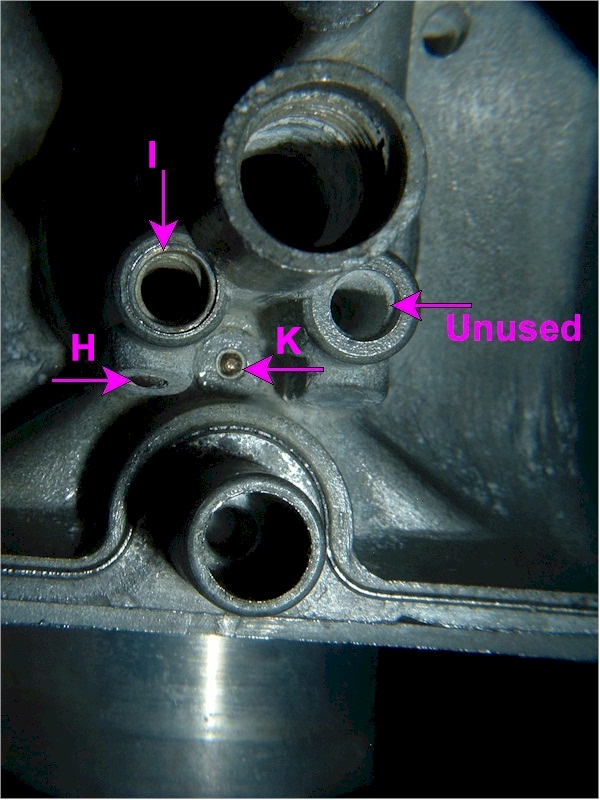
Fuel and air mix inside the pilot jet and exit the tip of the jet and enter a port identified by a plug inside the hole labeled J . This area cannot be seen while the carbs are mounted to the rack. The plug in this port is very deep inside the port because the portion of the port that is used is actually very short. No air or fuel comes out of this hole, it is just where the drill entered in order to create the passage way to intersect another passage. Then this hole was plugged.
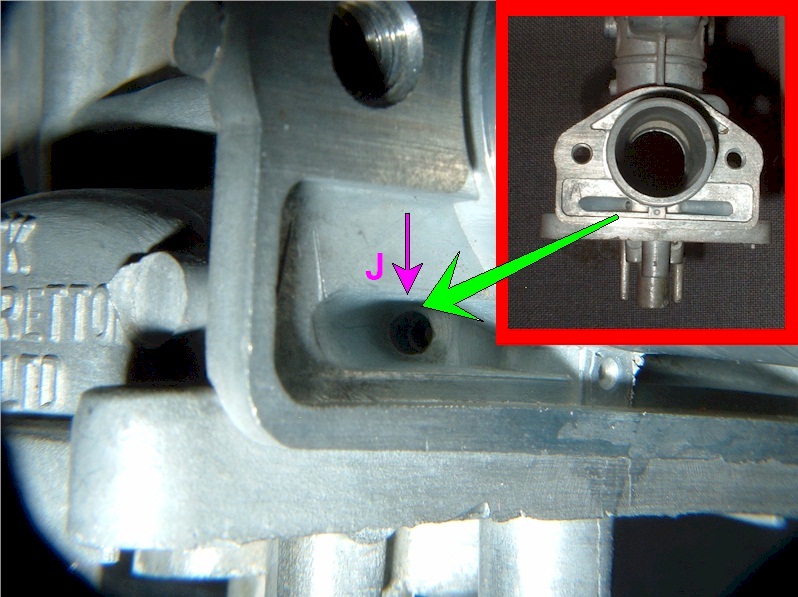
The passage created by J intersects another port identified by the plug labeled K . From there, the pilot mixture goes to the main bore of the carb.

L is the exit of the port marked by the plug K . This is where pilot mixture enters the carb bore.

In carb #4 on the rack, the port shown by the following arrow is drilled out and has a brass tube. This goes directly into the engine side of the carb bore, so it is direct manifold vacuum. It is connected with a hose to the vacuum petcock on the gas tank and is used to activate the petcock when the engine is running.
